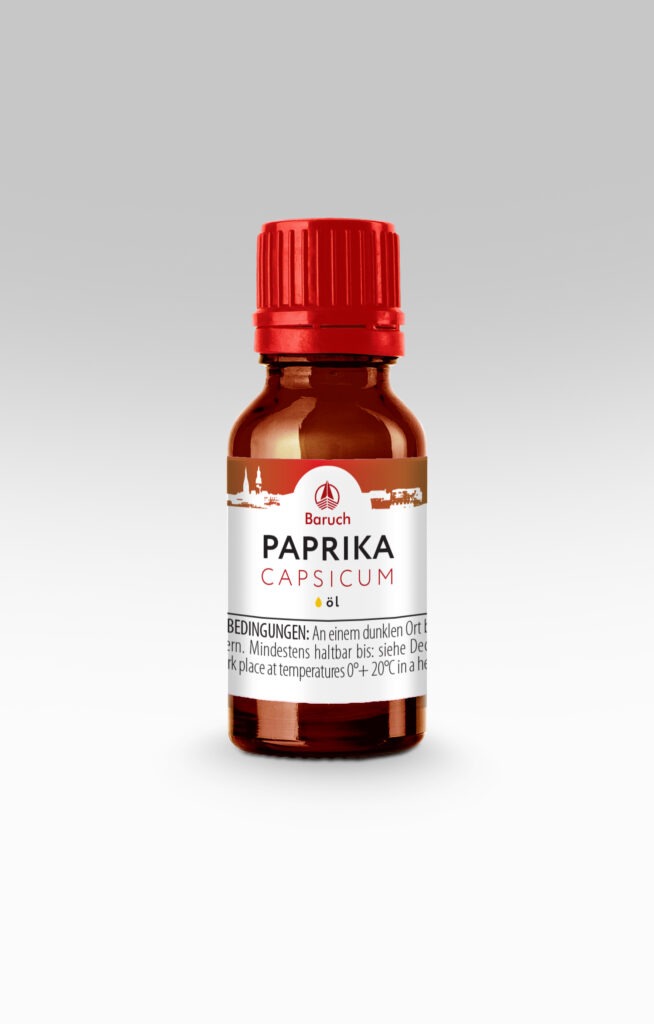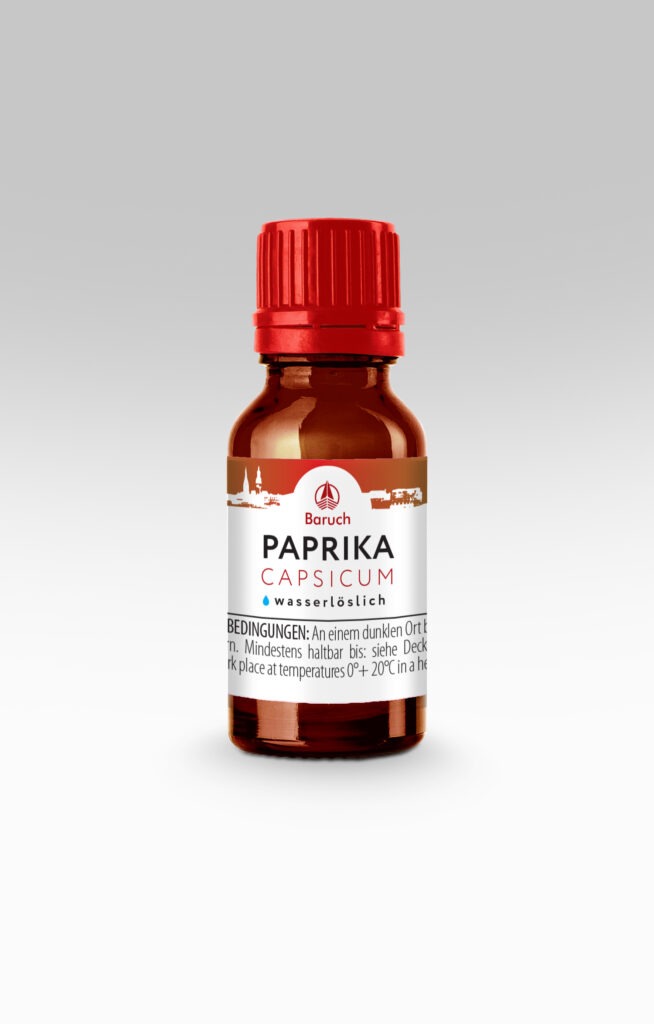Very often paprika is referred to as paprika fruit or sweet peppers. This name is incorrect.
In fact, paprika is a spice that is a mixture of crushed fruits of different types of spanisch peppers. We use this term in connection with the fact that we use different varieties of it in the production of CO2 extract from paprika, therefore such an extract is a liquid form of the classic paprika.
Currently, paprika is most widely produced and used in Hungary, where it has practically become a national spice. However, at the beginning of its history it was called “Red Indian Salt” because the paprika, both sweet and spicy, was imported from South America. According to the Hungarian classification, which is the most widespread worldwide, it is common to divide peppers into seven classes depending on sweetness, heat and color brilliance: gourmet, noble sweet, semi-sweet, special, pink, tender and hot paprika.
In the kitchen, paprika is used everywhere and in a wide variety of dishes. The best known are: “paprikash”, a Hungarian stew, and goulash, a thick meat soup with potatoes. Bell peppers are added to starters, hot vegetable dishes, fatty pork products like bacon, desserts and pastries to give them a certain flavor and a bright red-pink color.
It is recommended to use paprika in dishes for dietetic and medicinal nutrition. Its properties are proven to have a beneficial effect on the condition and elasticity of blood vessels, protection of blood vessels from the formation of blood clots, the appetite, immunity, function and condition of the organs of the gastrointestinal tract and the mucous membranes. Paprika also significantly accelerates the digestive and metabolic processes and stimulates potency in men.
CO2 extract from paprika “Biocevtica” is a liquid, oily liquid of bright red color with a pleasant, pronounced, characteristic smell and sweet taste with a very weak sharpness. According to the Hungarian classification, the CO2 extract of paprika can thus be classified in the classes of gourmet or noble sweet paprika.
In the course of chromatomass-spectrometric investigations, several hundred compounds were anylzed in the composition, of which more than 60 were identified.


Chart 1. The main components of the CO2 extract of paprika
| NAME | CONTENT IN% OF THE AMOUNT OF VOLATILE COMPONENTS | EFFECT |
|---|---|---|
| 1,8-Cineol | 22 | An extremely powerful antiseptic, heals, relieves pain. |
| Tocopherol (polyprenol, vitamin E) | 6 | Vitamin, antioxidant. Treatment of muscular dystrophies, dermatomyositis, sclerosis, heart diseases, vasospasm, liver, dysfunction of the sex glands in men, threatened termination of pregnancy, infertility. |
| Alpha Terpinyl Acetate | 3,2 | It is used as an antimicrobial component. Used for the synthesis of aromatic compounds, perfume fragrance. |
| Limonene | 2 | Perfume flavor, antifungal and aseptic agent. |
| Alpha- and Beta-Pinenes | 3 | Locally irritating, expectorant, antiseptic, diuretic. |
| Beta-carotene (provitamin A) | 1,9 | Reduces sensitivity to light, wound healing. In the body it is converted into vitamins A1 and A2. A metabolic regulator, promotes the formation of epithelium, in the presence of vitamin E it is an active antioxidant. |
| Sabinene | 1,6 | Antibacterial and antiviral effects. |
| Lycopene | 1 | Bitterness, increases appetite. |
| α- and β-linolenic acid | 0,1 | Unsaturated. An essential fatty acid from the class of omega-3 fatty acids. It has a membrane protecting, angio protective effect. Immunomodulatory, improves brain metabolism. |
| Linoleic acid | 2 | An essential fatty acid of the omega-6 class. It has anti-inflammatory, vasoconstrictor, and aggregating effects. If there is no balance between omega-3 and omega-6 fatty acids, competitive processes can arise that affect the metabolism. |
| Palmitic acid | 0,4 | Unsaturated fatty acid for water repellency in cosmetics. |
The use of paprika extracts in cosmetics is extremely limited – paprika has extremely warming and antibacterial properties on the skin. However, it is completely overlooked that bell peppers have no heat, but rather a number of unique vitamins, starting with beta-carotene and lycopene, to vitamin E, which have extremely positive effects on the skin and have a strong antioxidant and regenerative effect. The following products are currently manufactured on the basis of paprika extracts:
- Balms for the skin
- hair masks
- hand creams
| Food usage rates | Item А100: 0.001-0.005% (10-50g per ton) Water-soluble microemulsions EMA1: 0.1-0.5% (1-5l per 1000l or 1-5ml per liter) Water-soluble microemulsions EMA5: 0.02-0.1% (0.2-1l per 1000l or 0.2-1ml per liter) |
| Application rates in cosmetics | Item А10: 1-3% Item А100: 0.1-0.3% Item EMA1: 10-30% Item EMA5: 2-6% |
| Recommendations for use | It is recommended to add CO2 extracts in the final stages of preparation, in the cooling phase of the end product. |
| Storage advice | It is recommended to store CO2 extracts in a closed container in a cool room and avoid direct sunlight. |
Bell peppers are not found in the wild. It is cultivated everywhere.
Historical reference
Paprika practically got from the New World to the Old on the very first flight – Christopher Columbus, barely going ashore, immediately drew attention to a strange reddish spice with which the Indians used to season their dishes in abundance. He called this spice “red Indian salt” and the seeds of the red pepper from which it was made were collected and brought to Europe. This plant began to be grown in Spain and was quickly appreciated. From Spain, paprika spread to the Old World.
Chart 2. Application rates, recommendations for the use and storage of CO2 extract from paprika
